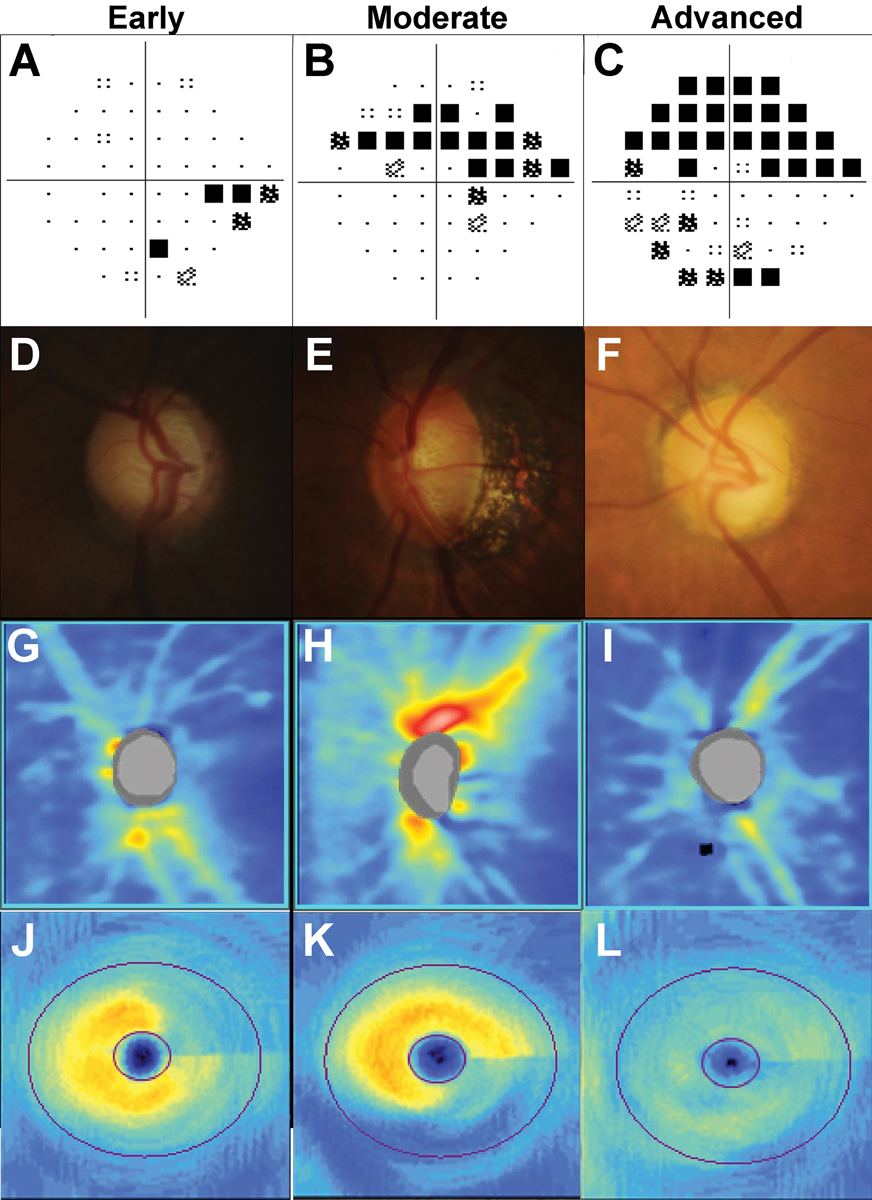 |
|
A reduction of vision-related QoL among patients with preperimetric glaucoma would have broad implications for the management of patients classified as glaucoma suspects or early glaucoma. Photo: Henrietta Wang, BOptom, MPH, and Jack Phu, OD, PhD. Click image to enlarge. |
Patient-reported vision-related quality of life (QoL) decreases as glaucomatous visual field (VF) loss worsens. However, there is controversy regarding whether preperimetric glaucoma reduces this measurement. This reduction of vision-related QoL among patients with preperimetric glaucoma would have broad implications for the management of patients classified as glaucoma suspects or early glaucoma. Because optical coherence tomography (OCT) was not available when the Ocular Hypertension Treatment Study (OHTS) was initiated in the early 1990s, researchers wanted to determine whether OHTS participants with reproducible glaucomatous optic disc progression and no glaucomatous VF abnormality in either eye by study criteria reported lower vision-related QoL compared with participants who did not develop POAG. They determined that participants with preperimetric glaucoma did not report decreased vision-related QoL on either the National Eye Institute Visual Function Questionnaire or Glaucoma Quality of Life questionnaires compared with ocular hypertensive participants who did not develop POAG. The study, which was published in JAMA Ophthalmology, concluded that this finding should allow clinicians and patients the time to determine the frequency of examinations and whether the initiation of treatment is appropriate.
This cross-sectional study used data from participants enrolled in the OHTS from 1994 to 1996 who completed 20-year examination follow-up and vision-related QoL surveys.Participants who developed POAG (n=321) were classified into four mutually exclusive groups: unilateral disc POAG with no VF POAG in either eye (28.3%); bilateral disc POAG with no VF POAG in either eye (18.7%); unilateral VF POAG with or without disc POAG (33.0%); and bilateral VF POAG with or without disc POAG (19.9%). Mean time from POAG diagnosis to OHTS 3 vision-related QoL surveys was 8.3 years. Of those participants completing 20-year follow-up, mean participant age at follow-up was 73.8 years, and 60.7% self-reported as female.
The mean Rasch-calibrated total Visual Function Questionnaire scores were 72.5 in the no POAG group (control) vs. 72.7 in the unilateral disc POAG group (difference: 0.17), 73.4 in the bilateral disc POAG group (difference: 0.92), 69.2 in the unilateral VF POAG group (difference: 3.33) and 58.5 in the bilateral VF POAG group (difference: -13.96). Similar results were found for the Glaucoma Quality of Life questionnaire.
Of the participants with bilateral VF loss, 25% reported “some,” “quite a lot,” or “severe” difficulty overall with visual tasks compared with 10% of participants in the no POAG group. On 14 of the 15 subscales of the Glaucoma Quality of Life questionnaire, there was a twofold or greater proportion of visual difficulty reported in the bilateral VF POAG group. This increase was not observed in the disc POAG or unilateral VF POAG groups.
“These data also suggest that bilateral VF POAG itself appears to have additional impact on vision-related QoL,” the study authors wrote. “Further studies are required to replicate this finding. We questioned whether the lower scores in the bilateral VF POAG group could be explained by the worse visual function in the better eye, worse eye or both eyes.”
They noted that advanced glaucoma was underrepresented in this cohort, which might limit the explanatory power of the vision-related QoL models. Measures that were not performed or were not available at the beginning of OHTS include central VF tests, contrast sensitivity testing across spatial frequencies, and OCT and OCT angiography.
“The absence of these tests may have limited the detection of structural and/or functional damage due to POAG,” they suggested.
Nevertheless, they felt that the wide divergence in VR-QoL among individuals with similar visual and health status underscores the impact of factors unique to individuals.
Gordon MO, Gao F, Burkland J, et al. Quality of life and primary open-angle glaucoma in the Ocular Hypertension Treatment Study. JAMA Ophthalmol. August 29, 2024. [Epub ahead of print]. |


